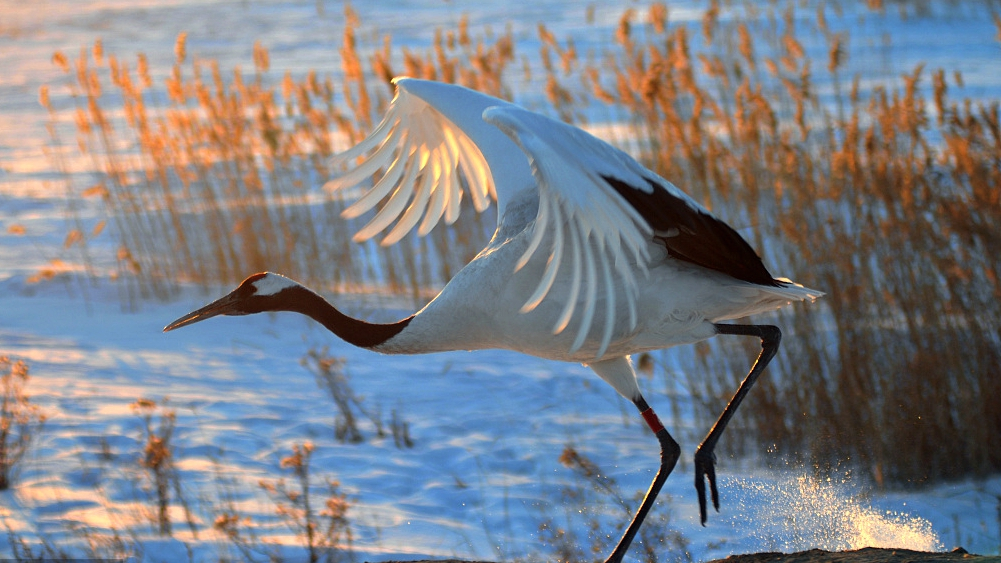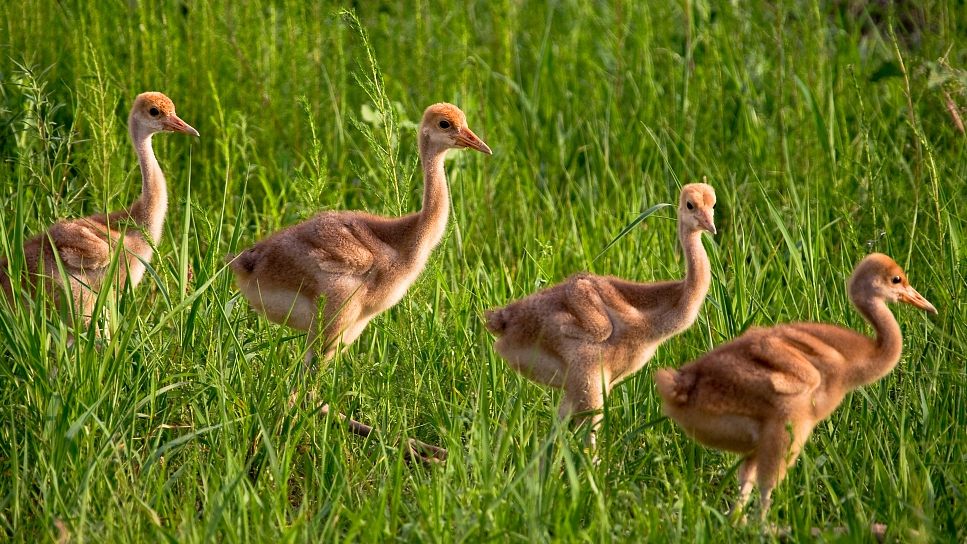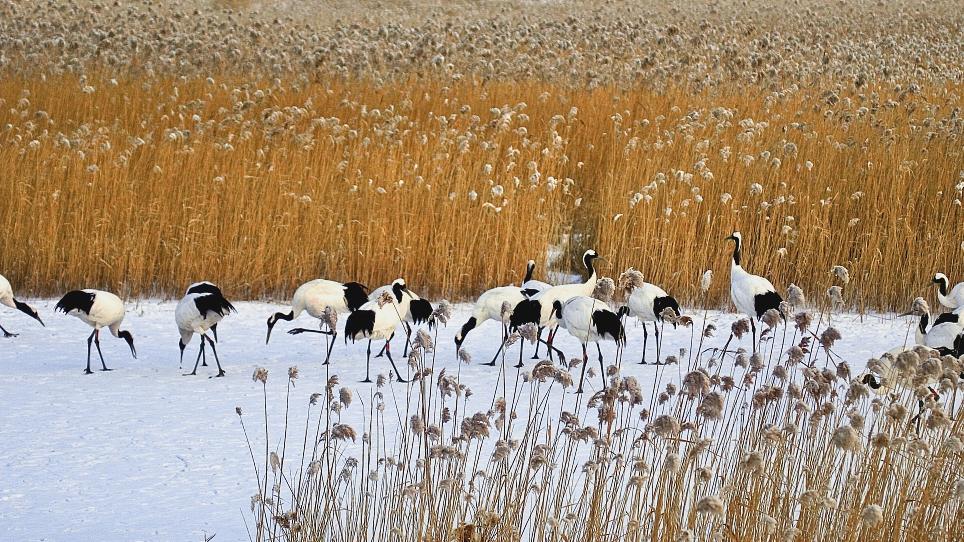
Story
15:42, 08-Apr-2019
Girl walking her family's footsteps to protect endangered cranes
CGTN
01:15

Xu Zhuo, a 27-year old, red-crowned crane protector in the Zhalong Nature Reserve of northeast China's Heilongjiang Province, followed the path of her father and aunt, who both lost their lives while working to protect cranes.
Every day, Xu opens her diary and writes down the details of her daily work feeding, breeding, inoculating and curing red-crowned cranes - the same work her aunt, Xu Xiujuan, and father, Xu Jianfeng, did decades ago.

Red-crowned cranes in the Zhalong Nature Reserve. /VCG Photo
Red-crowned cranes in the Zhalong Nature Reserve. /VCG Photo
Xu turned down a postgraduate recommendation from the Northeast Forestry University to become a researcher in breeding and protecting red-crowned cranes in the world's largest captive breeding center for red-crowned cranes after graduating from her university in 2016.
In April 2014, Xu's father died in a motorcycle crash. He had been working in the wetland for two days to protect a baby crane and was exhausted when he made the trip back home. The motorcycle ran off the road into a ditch.
At that time, Xu was a sophomore studying horticulture at the Northeast Agricultural University. The unexpected death of her father changed her original idea of being a horticulturist. Without hesitation, she transferred to the Northeast Forestry University to study wildlife conservation.
A popular Chinese song in the 1990s told the story of her aunt who fell into a marsh and drowned when searching for two missing white swans in Yancheng City, east China's Jiangsu Province.

Red-crowned cranes chicks in the Zhalong Nature Reserve. /VCG Photo
Red-crowned cranes chicks in the Zhalong Nature Reserve. /VCG Photo
"As a family, I love them deeply. As a colleague, I admire them very much. They overcame a lot of difficulties which I could hardly image," said Xu.
Xu is now the youngest observer at the research and monitoring center in the Zhalong Nature Reserve and a member of the third-generation crane guardians of the Xu family. She said that she will work hard to safeguard the reserve's beautiful landscape and ecological environment.
"I hope the next generation, our brothers and sisters, can also see and enjoy the beautiful landscape. Not only us but also birds and other animals can enjoy this good ecological environment," said Xu.

Red-crowned cranes in the Zhalong Nature Reserve. /VCG Photo
Red-crowned cranes in the Zhalong Nature Reserve. /VCG Photo
For Xu, apart from her father, aunt, grandpa and other bird protectors are also great, devoting themselves to protecting this beautiful wetland.
"I'm steeped profoundly in this career; it's in my blood. I cannot leave my job because of my deep love for red-crowned cranes and nature which have been deeply imprinted in my mind," said Li Zhigang, an engineer at the crane domesticating and breeding center of the Zhalong Nature Reserve.
The reserve, covering an area of 210,000 hectares, hosts Asia's biggest reed swamp - an ideal crane habitat. Home to 15 varieties of the birds, and with about 300 wild red-crowned cranes, it was listed as an International Important Wetland Protectorate in 1992.
(Cover images via VCG)
(If you want to contribute and have specific expertise, please contact us at nature@cgtn.com.)

SITEMAP
Copyright © 2018 CGTN. Beijing ICP prepared NO.16065310-3
Copyright © 2018 CGTN. Beijing ICP prepared NO.16065310-3